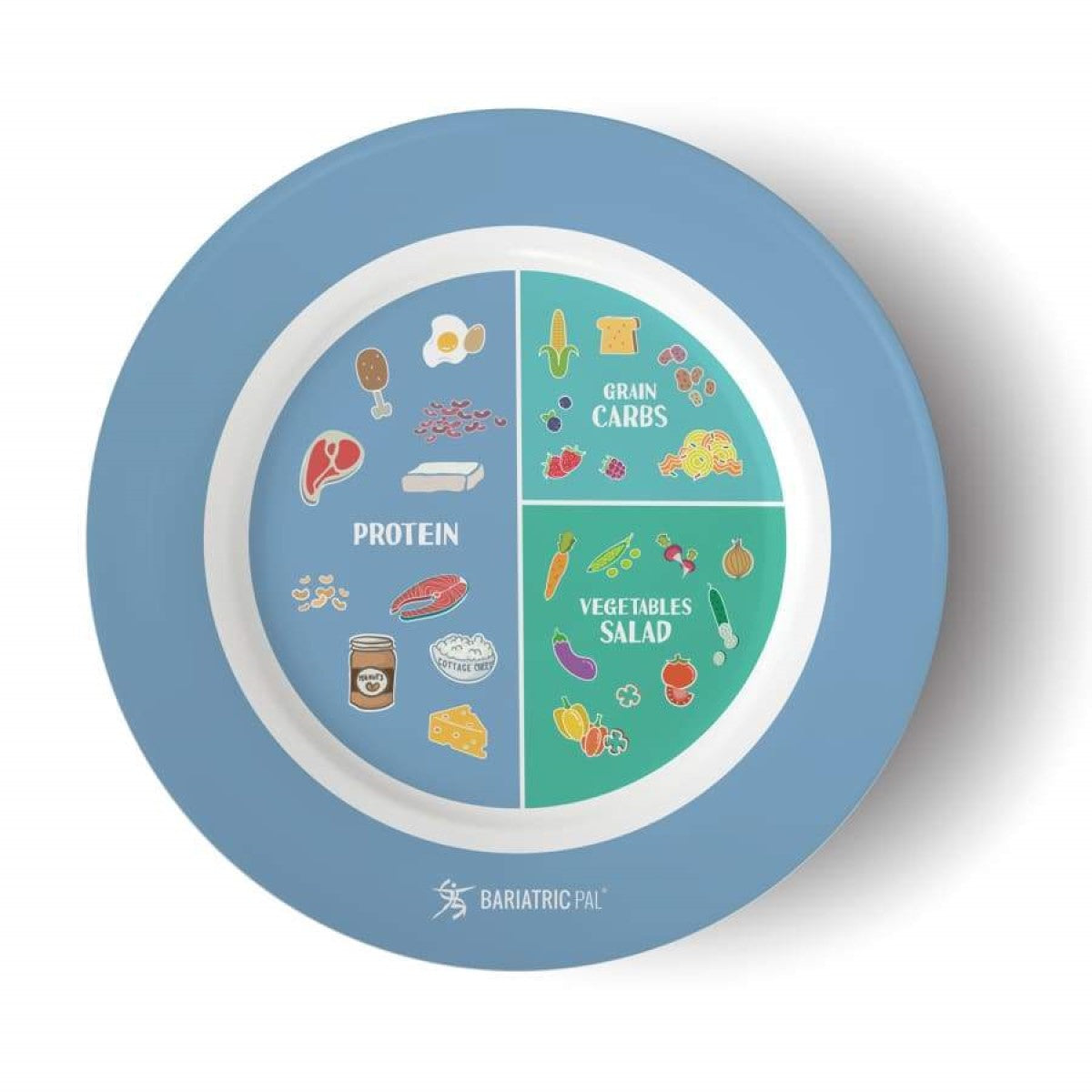How to Make Sure Every Meal Is Balanced
It’s a long journey towards goal weight and achieving health goals, but you can take it step by step by breaking it down meal by meal. It’s easy when you use a plate method to guide you in what to put on your plate. USDA’s MyPlate has some guidelines, or you might opt for the BariatricPal Portion Control Plate if you need a bariatric-specific or low-carb-specific meal.
Why Meal by Meal?
If you can make sure most meals are balanced, you can be confident that your overall diet will be balanced. That makes you more likely to hit your goals. It’s an easier approach. When you think about one meal at a time, you don’t have to worry about the next decade or month or week. Just think about your plate at your next meal.
Parts of a Balanced Meal
The USDA has MyPlate with each of these components at most meals.
- Vegetables. You can have as many non-starchy vegetables as you like. Examples include lettuce, broccoli, cauliflower, bell peppers, carrots, onions, and tomatoes. Corn, peas, and sweet potatoes are starchy vegetables that are best in smaller portion sizes.
- Fruit. Fresh fruit is best.
- Grains. Choose whole grains when you can, such as brown rice, whole-wheat bread or pasta, whole grain cereal, oatmeal, and quinoa.
- Proteins. Meat, chicken, eggs, beans, and fish are examples. So are nuts and seeds, though they are high in calories and serving sizes are small.
- Reduced-fat dairy. Skim milk, non-fat yogurt, and low-fat cheese are examples.
Fats are often within foods, such as fat in fatty meat or in nuts and seeds. Oils and butter can also be introduced during cooking. Plant-based oils and fat from fish are the healthiest fats.
Considerations for Special Diets
While the guidelines in MyPlate can work for the average person, they may not work for everyone. It is always best to ask your doctor about which foods and dietary patterns are best for you. Your doctor may also suggest limiting certain foods, too.
For example, these modifications may make sense for some people.
- Bariatric surgery patients may need to have more protein and
- People on a high-fat keto diet may want an extra serving of fat while skipping the grains and starchy vegetables, and limiting the fruit, on the plate.
- A heart-healthy diet may eliminate red meat and processed meat, while keeping seafood, egg whites, and beans as main sources of protein.
The BariatricPal Portion Control Plate can help for people on a post-op bariatric diet or on a low-carb or keto diet. It has a bigger space for protein and a smaller space for carbohydrates compared to USDA’s MyPlate. That means you are likely to serve yourself a low-carb meal every time.
A balanced diet can help you get where you want to go when it comes to weight loss and health. Logging your food can help, but so can making sure most of your meals are balanced. Without doing too much measuring, you can fill up your plate according to the food groups your doctor or a nutritionist suggests. The BariatricPal Store has all kinds of low-carb, high-protein foods and snacks to help you make up a delicious plate that fits into your weight loss diet.
















































































